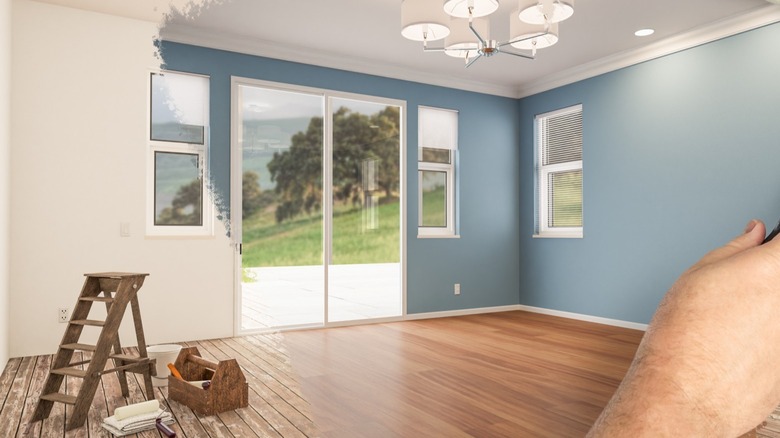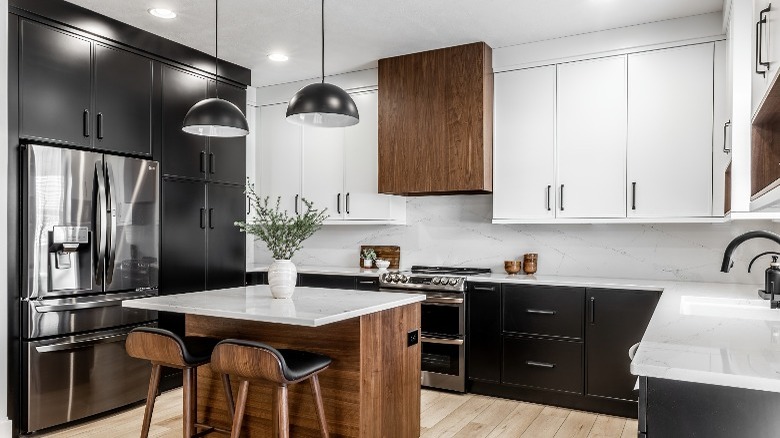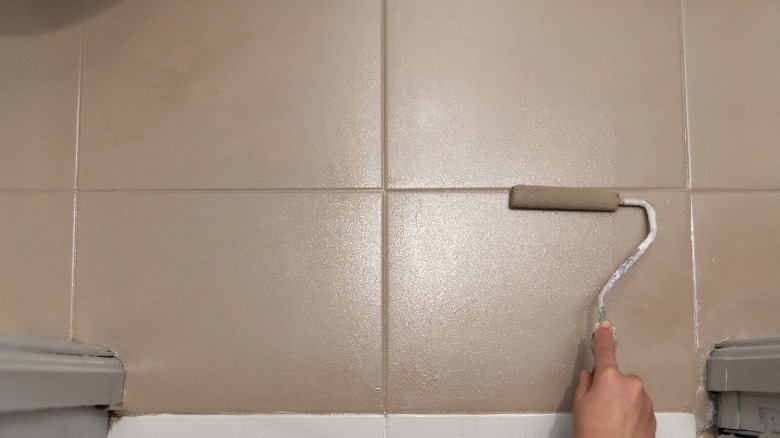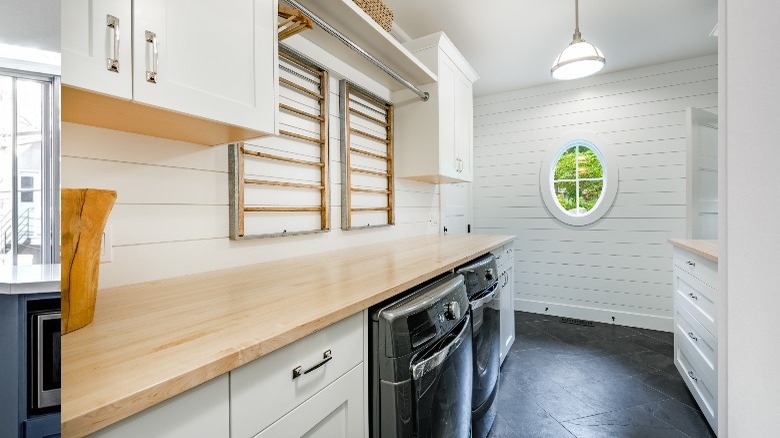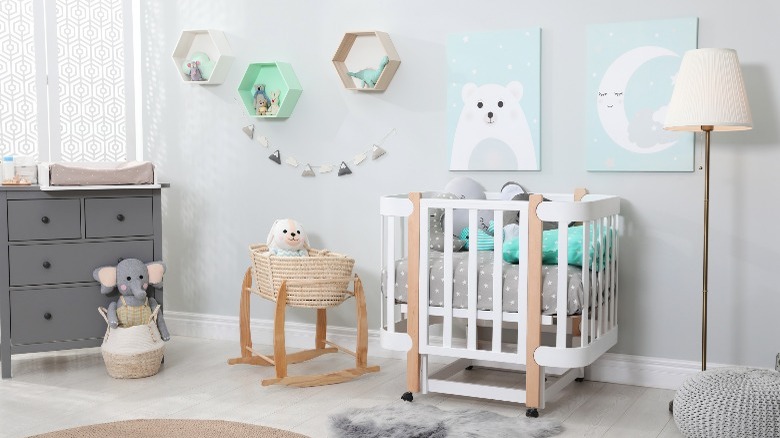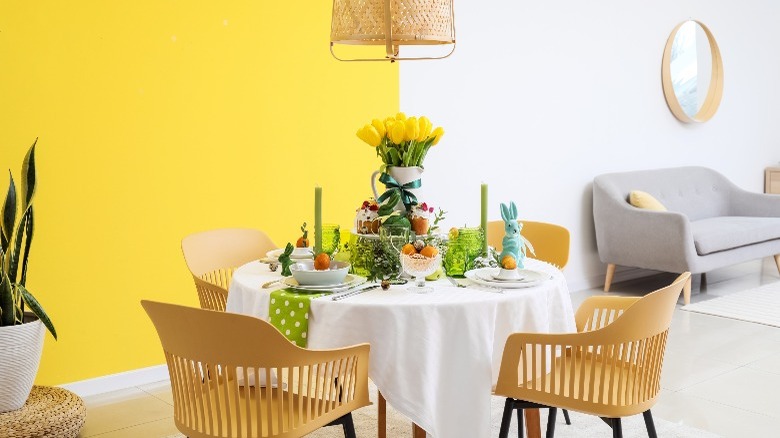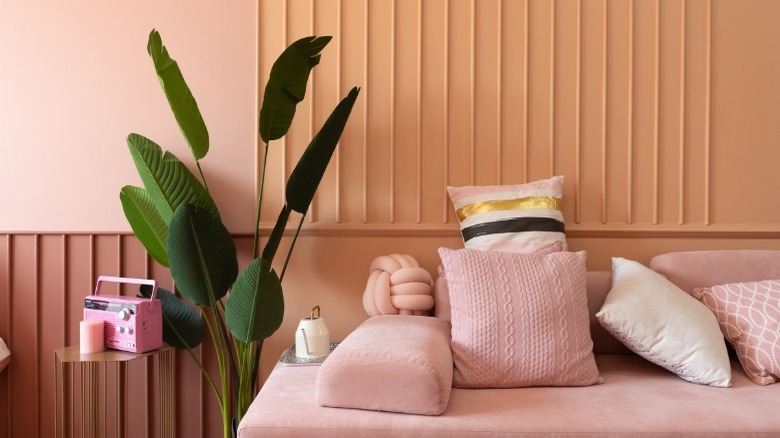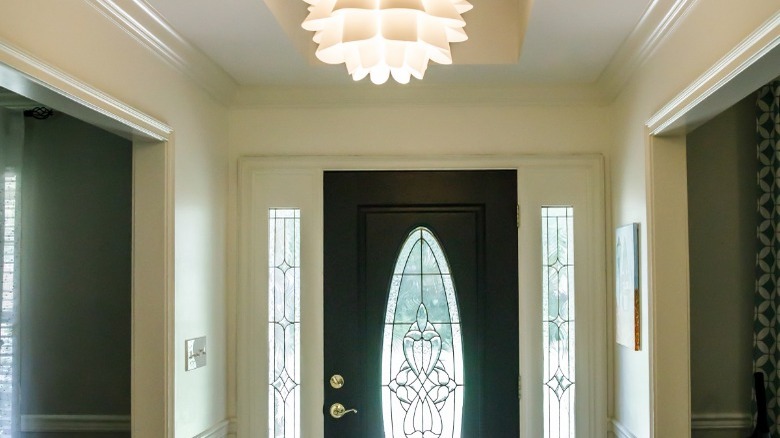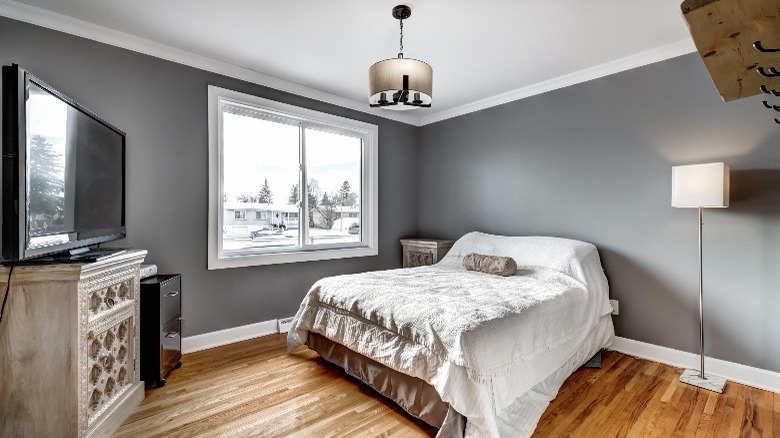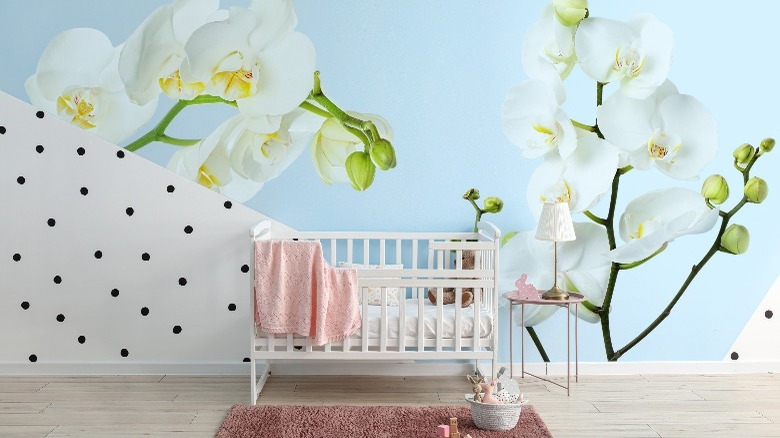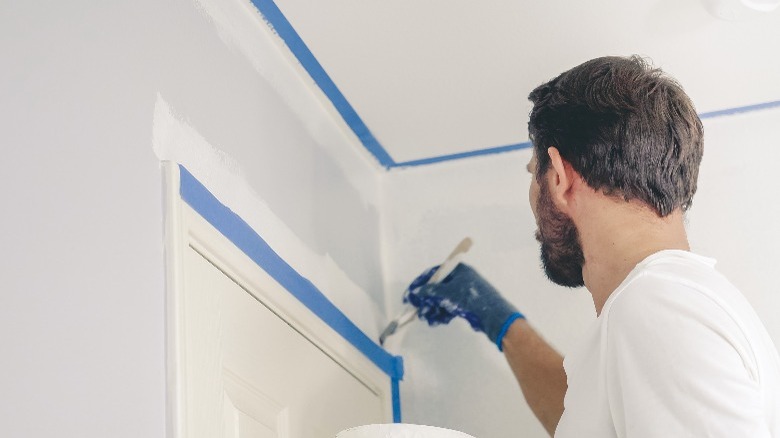How And Where To Use Satin Paint In Your Home
A mother hired her son's paint company to paint her house, but when she looked at the bill there was no amount next to the cost of the paint. She asked her son why he didn't charge her for the paint, and he told her, "Don't worry about the paint, Ma–it's on the house." We always like to start out with a little humor, especially when dealing with an issue that can be confusing and frustrating. If you've been trying to make sense of the different kinds of paints and finishes for your home, you'll definitely want to keep reading. One of the common types of paint used in a home's interior is satin paint, but what should you know about it and where are the best places to use it in your home?
To find these answers, let's first consult Five Star Painting on satin paint, and what the difference is with this finish. The amount of light that's reflected with each type of finish is what makes the most difference between them, in appearance. But additionally, satin paint retains its sheen even after it dries, and it's easy to wash when necessary. This makes it a great choice for high-traffic areas or rooms in the home, especially since it's both durable and washable. According to Consumer Reports, flat and matte finishes are more difficult to clean, and these finishes absorb light rather than reflect it, so there is no sheen. Sometimes this is acceptable, for example, those finishes are great for ceilings or even a bedroom, if you prefer it, where there's less chance of messy spills and not much wear and tear. Satin finish paints are indeed a great choice for much of the interior of your house.
In the kitchen
Glidden tells us that paint with a satin finish is an ideal choice for the kitchen and bathrooms because these rooms are high-traffic areas of the house where spills and regular cleaning are expected more often. This paint is able to withstand scrubbing and regular cleaning and still looks vibrant. However, when using satin paint it's important to do good prep work, and remember mistakes with painting show more with this paint. It's therefore a DIY project you'll want to take your time with, but as long as you smooth out the surface as much as possible, it's good at hiding imperfections beneath. A terrific paint job with a satin sheen finish can last for decades, with just a little extra care with painting.
Forbes advises satin paint for the kitchen, particularly around the range or oven and sink areas, for easier cleaning. Furthermore, they inform us that the shinier the finish, the easier to clean, and thus semi-gloss and high-gloss finishes are also good choices for the kitchen. The only thing is, the shinier the finish, the more unforgiving it is of imperfections under it. The shinier the paint, the more light it reflects, and therefore it will appear to accentuate any abnormalities. Satin finish paint is a good middle-ground choice because it is good at hiding certain textures over glossier finishes, and is the most popular choice in interior paint for all of these reasons. It also does take a bit longer drying time, so be sure to read all the instructions for the type of paint you choose, and keep in mind that cabinets are different and may require a different kind of paint.
In the bathrooms
As previously stated and verified by Consumer Reports, satin paint is recommended for use in the bathroom. Like the kitchen, bathrooms are higher traffic areas and need to be able to stand up to occasional scrubbing and regular cleaning. Another thing this article mentions to simplify the job in the bathroom is to use a single coat of self-priming satin paint, and no primer is necessary. It's also important to note that Consumer Reports tests different paints for things like durability, resistance to stains, and coverage. They recommend a satin finish for the bathroom walls, ceilings, and trim. One thing advised is washing the walls thoroughly first, and doing good prep work to ensure the walls are as smooth as possible before painting. Mask areas you don't want to be painted with painter's tape, and once you've covered the walls in one good coat, wait overnight for the paint to dry before using the bathroom.
Maya's Painting reminds us to choose satin paint unless we want an extra bright, shiny room. However, they do point out that if you have small children and pets, you might want to opt for semi-gloss due to the fact that it's even easier to clean than satin. Satin paint is advised for bathroom surfaces, though, since it's resistant to humidity. Make your decision based on the amount of light you want to bring into the room and how easy you want cleaning to be. Satin paint is ideal for use in bathrooms, whether you choose to paint the walls or the surfaces–or both.
In the well-ventilated laundry room
The next natural place you might think of for using satin paint would be the laundry room. Best of Trim recommends a satin paint sheen for the laundry room, mainly because it is resistant to moisture, mildew, dirt, and stains. This website additionally recommends water-based paint for a laundry room, mainly because of its all-natural ingredients and quick dry time.
However, Go Green says to only use semi-gloss if your laundry room has poor ventilation and is subject to moisture buildup. You typically will need to have more than one door, a window or good ventilation system, and larger square footage in your laundry room, and then you can use any type of paint you want. It's advised to use the same sheen as the rest of the house is painted in, and satin is widely preferred for the interior walls of the home. Most people seem to prefer the middle-ground satin sheen for its pearly luster and easy cleaning, especially over giving their home a high shine or a dull, flat appearance. It's advised to use semi-gloss paint as trim in the home, for most areas, including the well-ventilated laundry room.
For the trim in the nursery
If you're painting a nursery, it's natural to want to consult professionals to know what kind of paint you should be using. Like any normal parent, you don't want to put your child in any danger or risk its health in any way. To find out what the experts say, we first go to Reno Paint Mart, where we're told we should indeed choose a paint with low or no "VOCs", which stands for volatile organic compounds; toxic ingredients that are emitted due to solvents in the paint. Paints with high VOCs are in the process of being phased out completely, so it shouldn't be too difficult to find better choices. It also advises choosing a non-glare or a low-sheen finish, as otherwise, the reflectivity can irritate a newborn's eyes. Be sure you always paint in a well-ventilated room or wear a respirator to avoid inhaling any harmful paint fumes.
Furthermore, you will probably need to use more than one coat of the safer paint, due to the fact that VOCs are related to performance, and do affect the quality of the coverage. This website does recommend an eggshell or a satin finish, perhaps ideally an eggshell finish with satin trim. Eggshell is recommended for nursery walls so as not to reflect too much light in the room. It's likely a place where your newborn does a lot of sleeping, so a calm look and atmosphere will be preferable to a bright, shiny, and distracting one. Another interesting idea for your new baby's room is doing a mural. The suggestion is to use a projector to cast a favorite book or cartoon character or scene on the wall, then take a pencil and trace it out. An ambitious, but very cool idea!
In the dining room
Back to Consumer Reports, we see they also advise satin paint for the dining room, and typically you can choose satin sheen for most of the rooms in your house. Keeping the same sheen throughout gives your home a polished and professional look. The dining room is no different, and satin paint with semi-gloss finish on the trim is a common scheme advised for the home's interior. However, some other websites like Paint Color Project recommend eggshell finish over satin, though they admit either is fine, and there's not a lot of difference. But you might be wondering by now if there's anything special to know about how to apply satin sheen paint. Let's go over a few tips to help you complete your home renovation plans and paint like a pro.
Arin Solange at Home advises using satin paint for the trim in your living room and prefers eggshell for the walls. Whether you decide to use satin paint for the walls or the trim –- or both –- you'll want to do good prep work.
In the living room
Designing Idea advises that if your living room is a place where the family gathers frequently, it's best to use either satin or eggshell paint for the walls, for durability and wash-ability in this high-traffic area. If you have a formal living room that is rarely used, you can get by with flat paint (less expensive). Glidden also reminds us that satin paint is less effective at hiding things like cracks, divots, and patched spots that haven't been smoothed out properly. But for the real tips on living room painting, PPG Paints has some excellent advice. They are all for satin finishes, and recommend a one-coat, self-priming paint for living room walls. Once you have the paint you're going to use, the next step is to gather the materials you will need.
The materials will be things like a paintbrush, paint roller, paint roller tray, sandpaper, drop cloths, painter's tape, caulk and caulking gun, rags, and a stepladder. For preparing the room, you'll need to remove pictures and anything hanging on the walls including curtains and rods. You'll also need to remove the outlet covers and wall switch covers. Next, you're going to take the caulking gun to fill any nail holes and use a rag to wipe off excess. Smooth the edges if necessary with sandpaper and wipe clean. Be sure you've wiped the walls clean of dust. Use drop cloths to protect floors and furniture not moved out of the room, and use painter's tape around the windows, baseboards, and doors or areas with straight edges. After painting the walls and before the paint dries completely, remove the painter's tape so that the new paint doesn't pull up and off the wall. These are great tips for painting your living room with satin paint!
In the entryway and hallways
Consumer Reports recommends using satin paint for hallways, and additionally offers a few tips. Using a putty knife, scrape off any cracked or peeling paint from the walls during your prep work, including any rough edges from repairing nail holes. Use the tool to smooth out any bumps or edges, before using sandpaper if needed. Again, you can also use satin paint on the trim, as well, if you so choose. Sundeleaf Painting recommends using satin paint in entryways, and also advises getting the kind of satin paint with an anti-mildew additive. Anderson and Grant recommend satin sheen paint for hallways as well, and for another good reason. Areas in the house that don't get much natural light are great spots for satin sheen paint, as it will appear brighter due to its reflectivity.
Food52 offers a great idea for painting your entryway and giving your house a totally different look, right from the gate. Though they use flat paint, you can use whatever sheen you prefer. Similar to painting a mural, you can paint large, geometrical shapes in the entryway and use two different complementary colors, or even black and white! With a pencil, a string, a level, and a tape measure, you can draw the lines out for the shapes you want first, and tape off the edges. Be sure to use drop cloths for the floor. You can use a thumbtack and a string to trace out a perfect circle, and go from there with other designs and shapes. Use the tape measure for more precise measurements when needed. Give your house a whole new modern look!
In the basement
Sharper Impressions Painting says finishing a basement can increase your home's living space and thus add square footage (which equals more value) to your home. Since the basement doesn't get as much sunlight as the rest of the house, it's naturally an ideal place for satin sheen paint. Not only that, but it recommends deeper, more vibrant colors such as blue, green, gray, brown, or dark hues over light ones, to create a warm, cozy, yet energized feel to the space. You could put in a home theater room, game room, or (another popular idea for the basement) a small pub! Additionally, use more light sources, and get creative with these. Track lighting is one option. You could also do neon signs for a pub atmosphere. Recessed lights are another choice, and there are a ton of creative lighting choices to really design a unique, fun vibe for your downstairs "lair." A satin paint sheen will be the perfect backdrop.
Another great tip from this website is not to neglect your basement ceilings when painting, or the space could still end up looking unprofessional and/or unfinished and drab. Although flat paint is typically advised for ceilings, it also recommends using black for the color instead of white or off-white. Apparently, this can actually create the illusion of more space, rather than less. You can also choose white to lighten up the space and make it seem more airy. Contrarily, consider leaving the ceiling beams exposed instead of drywalling them. Then, just paint the beams and ducts for a different, loft-like feel. If there's brickwork in your basement, consider painting the bricks to either accentuate the main color scheme, or to match it! This can actually be a terrific way to accentuate the individuality of your design.
In the kids' rooms
In another article in Consumer Reports, we learn some simple shortcuts for how to paint the kids' room in just one coat. Of course, this is a great area for satin paint, for all the reasons aforementioned, particularly concerning stain resistance. The information starts out with offering a huge tip concerning self-priming paints. It says they've tested a group of 65 interior paints and come up with a group of 20 self-priming paints that really work in just one coat, no separate primer needed. Furthermore, the paints are good enough to cover old paint, old wallpaper, unpainted drywall, or wood. It will sufficiently cover most any color, as well, although a second coat is still nice, especially in certain circumstances. They additionally recommend using satin (or eggshell) finish paint for the walls in kids' rooms.
Also keep in mind if your house was built before 1978, you may have lead paint issues to deal with, so consult with a professional for information (via Consumer Reports). Be sure to remember to choose low or no VOC paints for any child's room, as well. Mark's Painting recommends satin paint for kids' room walls also, but this expert tells us the importance of priming the paint correctly, stating if done right, the paint will last for their entire childhood! Because satin paint is water-based, most stains can be removed with simple soap and water. Additionally, they won't have that tacky, slightly sticky feeling like gloss paints do. Keep in mind the mural idea for the kids' rooms, too — paint their favorite Disney character on the wall for added flair!
Satin paint for doors, window frames, baseboards, and trim
Last but not least, according to SF Gate, it's appropriate to use satin paint for doors, window frames, baseboards, and even ceilings, and satin paint is excellent for both interior and exterior trim! It holds up well in the weather and does not peel or crack easily. It can be used on aluminum siding, wood, stucco, concrete, and exterior as well as interior doors and window trim. And if you're looking for a whole new sharp look for some fresh curb appeal but can't afford to paint your entire house, try power washing it instead, and applying a deep accent color to your window frames and front door. This can transform the look of your home!
As you can see from all of this, satin paint can be used throughout your home, both inside and out, and in fact is likely one of the best choices you can make. With a little extra time and careful attention to detail, you can either DIY or hire a pro, and use satin sheen paint to transform the spaces in your home. Some of the best satin paint brands according to Google are Behr, Benjamin Moore, and Sherwin-Williams. Happy painting!
